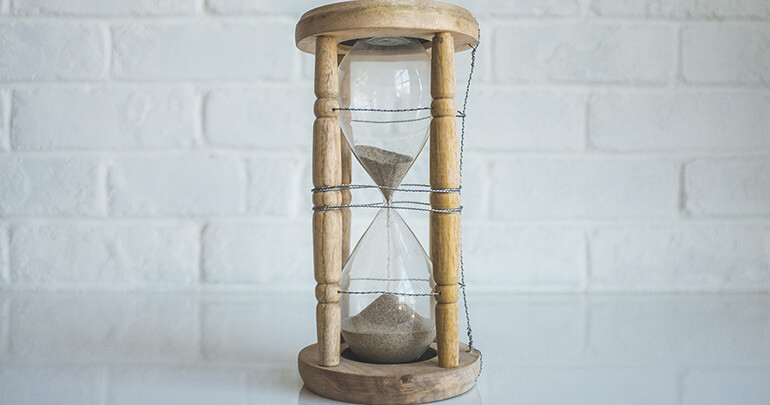Have you ever dozed off during a seemingly endless presentation? It is the role of an event organizer to avoid exactly that and if he succeeds, everybody walks out a winner: The organizer, the audience and even the speakers themselves.
Toward the end of a conference, you are comfortably seated in the semi-darkness of the room and gradually drifting off to sleep as yet another speaker cannot seem to wrap up his talk… Does that ring a bell? The topic might actually be quite interesting. If only his talk was a little shorter…
Why it is up to the organizer to specify the duration of the talks
If you have trouble concentrating on a talk, that is not necessarily due to excessive speaking time. Not the duration itself is at the root of your lack of attention but, to put it simply, boredom. As TV coach TJ Walker puts it, “*A three-minute speech can be too long if you are dreadfully dull*”. That is why the speaker needs to focus on the purpose of his talk and not its duration.
The organizer needs to provide guidelines beforehand to let the speakers now how much time they each have. Then, the organizer needs to review the presentations ahead of time to ensure they comply with conditions. Ideally, the talks are even rehearsed during a simulation.
If one of the presentations turns out too long, the organizer should not let the speaker cut down the talk by him- or herself. Instead, work together: The organizer’s experience and external view are especially valuable in choosing points that will interest the audience.
Of course, the organizer needs to get pretty invested. But that is his job after all, isn’t it? By helping select the key elements of each presentation, he makes sure that the event is balanced overall.
Shorter presentations are better at retaining attention
What is the ideal duration of a presentation? Several studies reach the same conclusion: between 15 and 20 minutes. One of the first notable experiments on the subject was carried out by the US Navy in the 70s. The Navy wanted to optimize the training time of recruits. While researchers expected the ideal duration to approach an hour or half an hour at least, they were surprised to find that the recruits’ attention dropped significantly after only 18 minutes.
A little closer to our setting, the experiment that Maureen Murphy carried out in 2007 at the University of North Texas compared the attention spans of two groups of adults who were listening to presentations in a working environment: Both groups listened to one-hour talks but while the first group listened to the entire talk at once, the second group was allowed to take a short break after each 20-minute interval. The result: The people in the second group appreciated their talks more and were not only able to repeat more information when questioned directly after the talk but also displayed higher memorization rates a month down the road.
In reality, there is no one rule when it comes to the duration of a presentation. A passionate speaker might capture the audience’s attention for much longer and not all audiences are the same either. However, these studies clearly prove that a talk divided into several shorter intervals (of around 20 minutes on average) is by far superior to a pompous long non-stop presentation.
But what are your plans for the breaks? Of course, you can simply let everyone relax for a bit, stretch their bodies or network. But you can also use the breaks to invite your audience to participate in activities relating to the talk: Ask questions, play a short game, answer polls, start a creativity session, etc. All of these activities are part of what is called active learning and boost the audience’s concentration.
The shorter the better holds true for the speaker as well
By now you have probably grasped the importance of not unnecessarily extending the duration of a talk. By giving a shorter talk or planning creative breaks, the speaker is better able to keep the audience’s attention. As a result, the message will be much more impactful. On another note, creativity often flourishes under constraints. As the British poet and playwright T. S. Eliot said, “*When forced to work within a strict framework, the imagination is taxed to its utmost and will produce its richest ideas. Given total freedom, the work is likely to sprawl.*” The speaker needs to use his or her imagination to either reduce his content without forgetting any vital points or distilling his talk down to its essence by wrapping his message in less words. In either case, his talk gains in substance and intensity.
By limiting the duration of his presentation, he can also make time for a short Q&A session with the audience. An actively engaged audience is more likely to remember information and their questions might allow you to explain certain points that you didn’t have time for during your talk.
Last but not least, by talking less the speakers have more time to attend each other’s presentations. As a result, they are also getting the most out of their participation in the event.
When the organizer makes sure that talks don’t drag on forever, he creates a framework for rich and valuable talks. This is also the perfect occasion to explore more original presentation modes that might prove more impactful than traditional methods.
Find out how Beekast can boost creativity during your presentations and thereby favor active learning in your audience.
